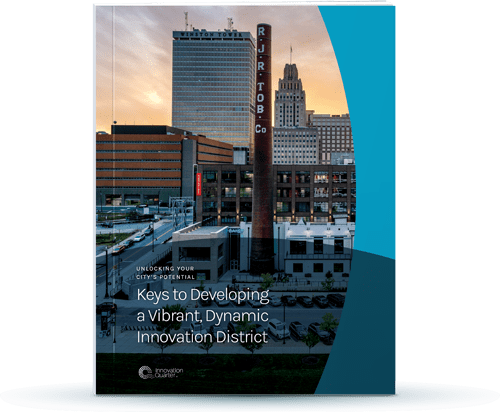Placemaking is a dynamic approach to the planning, design and management of public spaces. By highlighting a local community’s assets and unleashing their potential, placemaking intentionally creates public spaces that promote people’s well-being.
The Four Types of Placemaking
- Standard placemaking is the process of creating quality places where people want to live, work, play and learn.
- Strategic placemaking is targeted to a particular goal in addition to the creation of space. For example, developing spaces that will attract businesses, leading to jobs and growth.
- Tactical placemaking emphasizes testing projects through phases and iterations rather than constructing projects straight from the drawing board.
- Creative placemaking integrates arts, culture and design activities into efforts that strengthen communities.
Exciting Placemaking Examples from Across the Country
Placemaking can run the gamut—from placing trash cans on sidewalks to building an innovation district where the community can convene. However, a common thread runs through all placemaking projects: building stronger communities. Here are some placemaking projects from across the country doing just that.
Pier 70 in San Francisco, CA
Placemaking model: Strategic
What they did: An historic pier and large industrial building was given a new, functional life. It now offers office space, retail shops, affordable housing and childcare, all easily accessed by public transit. Pier 70’s website describes it as “a place that embodies its history while envisioning its future.”
What we like about it: There are so many ways that this space allows the community to flourish—from implementing workforce development programs and offering affordable housing and childcare options to nurturing a small business ecosystem with a variety of retail spaces for local businesses to flourish.


The Porch at 30th St. Station in Philadelphia, PA
Placemaking model: Tactical
What they did: By setting up cafe tables outside of one of the country’s busiest train stations, The Porch at 30th St. Station encourages visitors to slow down and enjoy Philly—and each other’s company! This area regularly hosts food trucks and is also used for pop-up musical performances.
What we like about it: The Porch at 30th St. Station brings people together in a previously undesirable and underutilized space.

The Lawn on D in Boston, MA
Placemaking model: Standard
What they did: The Lawn on D is an accessible “adult playground” that features swings, playground equipment and other fun activities sized for adults. This outdoor space encourages engagement through lawn games, live entertainment and food.
What we like about it: Who wouldn’t want to feel like a kid again? Similar experiences for adults exist elsewhere at a fee, so having this experience accessible to all is a great asset to the city.


Life at the Intersections Mural in Chicago, IL
Placemaking model: Creative
What they did: To create the Life at the Intersections mural, artist Molly Costello interviewed over 70 locals who served as inspiration for the art piece.
What we like about it: This artist put a lot of care into the mural, ensuring it represents the people of the area and their stories. Sponsored by the Chicago Association of Realtors and the Andersonville Chamber of Commerce, this mural encourages “reflection on alternative community safety, wellness, mutual support and care.”

Soulsville USA Festival in Memphis, TN
Placemaking model: Creative
What they did: Community LIFT and the Memphis Symphony have partnered to organize concerts in Soulsville, a historic community that’s also home to Stax Records.
What we like about it: The Soulsville USA Festival hosts a variety of music genres, which attracts a diverse audience while contributing to the revitalization of the neighborhood. The goal is to provide music and entertainment, honor the area and its rich history, and celebrate Memphis’s Black culture.


The Intentional Creation of Great Spaces
Placemaking is a process and a philosophy that drives growth and builds vibrant communities. These examples are just a few of the many projects that create inclusive, accessible and safe places for all to enjoy. Similarly, the Innovation Quarter is built on the belief that a healthy, economically stable and desirable community can be achieved through intentional placemaking activities and strategic investments.




